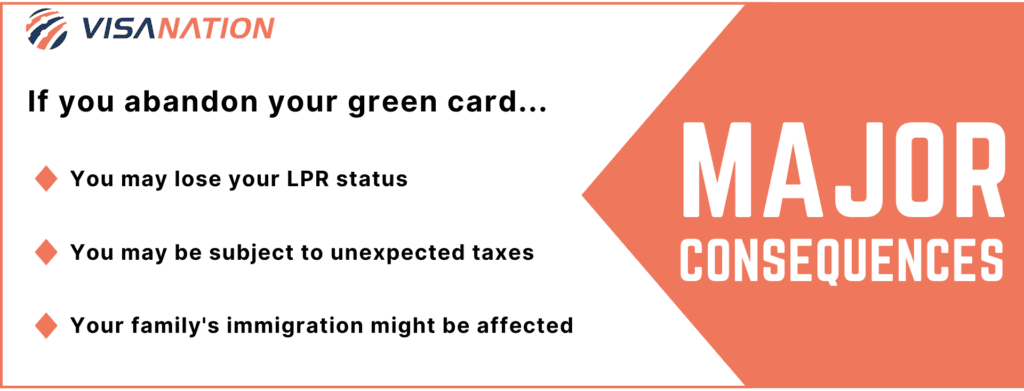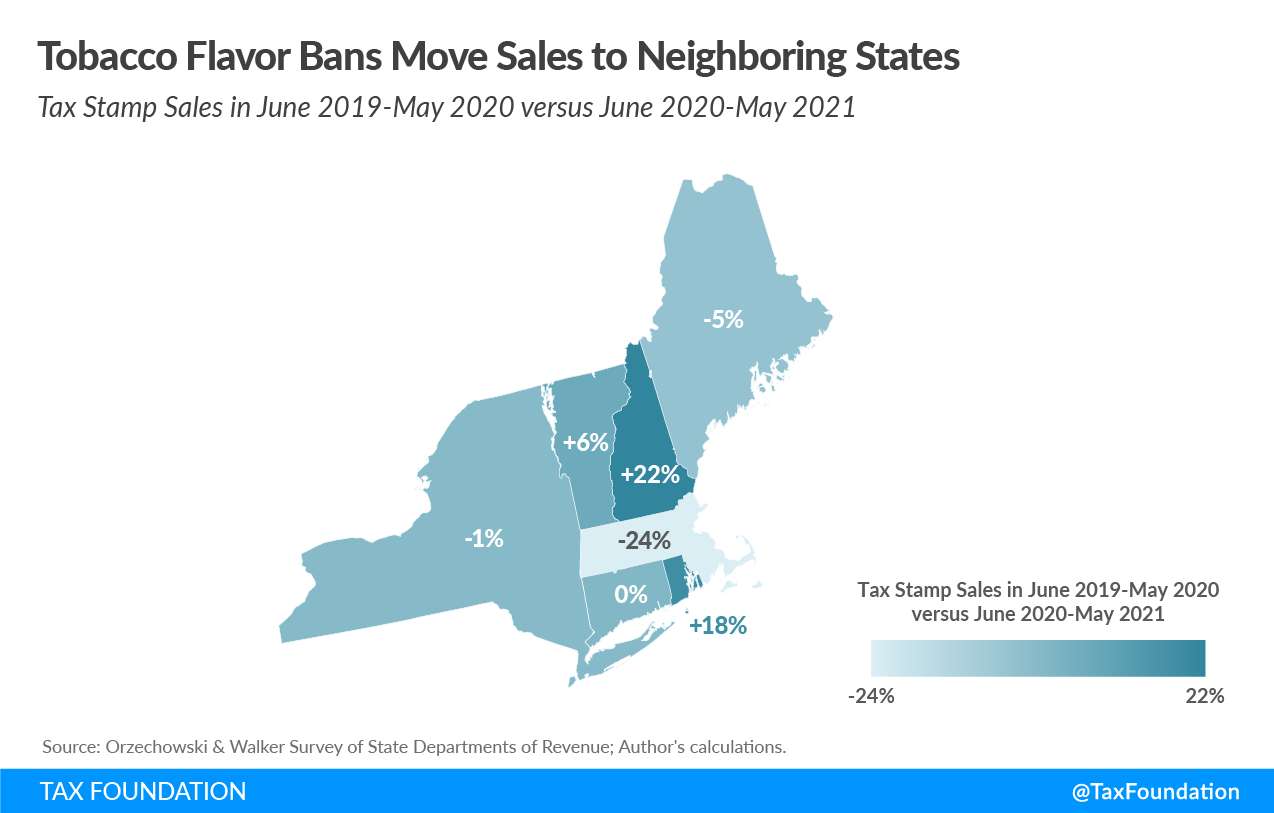3 Green Card Abandonment Consequences & Ways To Reinstate
You may be subject to green card abandonment or green card cancellation without even knowing it. Many U.S. permanent residents travel every year without knowing they risk losing their legal permanent resident (LPR) status. On this page, you will learn what is green card abandonment, a re-entry permit, Form I-407, and how to reinstate a green card after abandonment. You will also learn about serious green card abandonment consequences and how to avoid them.
What Is Considered Green Card Abandonment?
Two circumstances will render a permanent resident status as abandoned according to the USCIS. They are the voluntary surrender of permanent resident status and staying abroad beyond the stipulated period of time.
Abandonment Due To Staying Over a Year Abroad
Your green card might be considered to have been abandoned if you travel out of the U.S. and stay for over 12 months. As a U.S. permanent resident, one of the requirements by the government is that you always apply for and have all your travel documents with you whenever you travel out of the country, allowing you to return without issue. One of the documents is a re-entry permit, which lets you resume your permanent resident status whenever you are back in the U.S.
Voluntarily Surrendering Green Card
This means that although you are an LPR, you want to surrender your green card. To do this, you will need to file and submit the I-407, Record of Abandonment of Lawful Permanent Resident Status. This is to show that you are willingly and affirmatively relinquishing your resident status. On this form, you will provide personal information about yourself, including your alien number and you will be asked to state your reason for the abandonment.
Re-Entry Permit: To Avoid Green Card Abandonment
A re-entry permit allows permanent U.S. residents to travel and remain out of the U.S. for more than 12 months without losing their residency status. The permit is usually issued with 2 years of validity and can be applied for as many times as possible just to keep showing the U.S. that you still very much intend to come back. A re-entry permit will help you keep your green card in the following situations:
- If you are planning on traveling outside of the U.S. for more than 1 year but no more than 2 years;
- If you are planning on traveling outside of the U.S. for more than 180 consecutive days; and
- When you have been given a warning by a Custom and Border Protection (CBP) officer that you may lose your permanent residency status.
Green Card Abandonment Consequences
Green card abandonment consequences can be very costly for any legal permanent resident. Thus, voluntarily abandoning your green card or overstaying abroad for more than a year without a re-entry permit can have numerous negative effects. Below are listed some of them:
- You will lose your LPR status and may be required to restart the process from the beginning. However, there are some other options listed in the next section;
- You may be subject to “exit tax” under 877A of the U.S. code. This means that the IRS will treat your assets as sold for market value on the day when you lose your LPR. You will not lose your assets but will be obliged to pay taxes on them. Depending on the value of your assets, you may be subject to some unexpected taxes; and
- You will be unable to sponsor any family members to visit the U.S. or any family members that are in the process of coming to the U.S.
If you have a family in the U.S. and/or significant financial ties to the country, your green card abandonment consequences can be much higher. It is important to know what is at stake and what is the importance of avoiding losing your green card.
Consequences of Returning To The U.S. After Abandonment Without Necessary Documents
The officers of the Customs and Border Protection usually inspect returning residents and place people in removal proceedings if they are found without necessary documents after abandoning their residence in the U.S. CBP officers may ask you to fill out Form I-407 if they believe you abandoned your lawful permanent resident status. However, in some cases, people are admitted without mention of their abandonment.
If you are admitted at the point of entry without being asked about your abandonment issue by the CBP officers, that doesn’t mean you are free from being removed from the U.S. According to the Department of State (DOS), you are deportable if you are found to have returned to the U.S. without all necessary documents.
You might have even stayed for years after your return, the government may still place you in removal proceedings if you are unable to prove that you had no intention of abandoning your permanent residency (which can be proved by maintaining significant ties to the U.S.) or that your prolonged absence was due to circumstances beyond your control. It is, therefore, in your own best interest that you satisfy all the requirements of the law regarding your returning process.
Another consequence of green card abandonment comes later when you apply for naturalization. USCIS may quite rightfully deny your naturalization Form N-400 even if your prolonged travel out of the U.S. was more than 5 years ago.
Reinstating Your Green Card Back After Abandonment
If you have overstayed your two-year re-entry validity period or one-year green card overseas validity period, you will need to file a returning resident (SB-1) immigrant visa. This may cause some hurdles since you have exceeded the time frame. Your application approval will depend on how well you can convince the consular officer that you deserve to be issued the returning resident visa, allowing you to reinstate your green card.
If your SB-1 application is approved, the consulate officer will issue you a new I-551, which will enable you to travel back to the U.S. without having to file a new green card petition. You will only be asked to file and submit a DS-260 form alongside your medical records and application fees.
How Do I Know If I Am Qualified for Returning Resident Status?
Your application to reinstate your green card is filed at the U.S. Embassy or Consulate nearest to your current location abroad. You will be interviewed to determine that you are not inadmissible on health grounds or in criminal cases. To qualify for returning resident status, you will have to prove to the consular officer that:
- As of the last time you departed the U.S., you were still a lawful permanent resident. Meaning your reason for departure wasn’t on any crime-related issue. You will have to present your green card and other documents that prove you were an eligible permanent resident.
- Your extended period of staying overseas beyond your re-entry permit or green card overseas validity was due to circumstances beyond your control. If it was due to medical reasons or employment with a U.S. company, you may present proof of this to the consular officer.
- You departed the U.S. intending to come back, and you have not abandoned this intention. The main reason for the interview and other re-entry processes is for the U.S. government to be sure that you are not planning to make another place your principal place of residence. During the process, the CBP officers will evaluate your engagements in the recent past to determine if you still maintained ties to the U.S. during the period you were away. If you failed to file U.S. income tax returns, or you have declared yourself a nonimmigrant on the U.S. tax returns, the officers may have reason to believe that you intended to abandon your status in the U.S.
Other factors that the CBP may consider include if you have properties, investments and your close relatives in the U.S. They may also need to check if major assets like bank accounts in the U.S., a U.S. issued driver’s license, and any other things that will help them to know your true intentions. All these are done to be sure that you are not having stronger ties to another country than you have to the U.S.
Documents to Submit for Returning Resident Application
Documents to be present may vary depending on the consulate or embassy and applicants’ situations. However, the following are part of the documents that must be submitted.
- A completed DS-117, Application to Determine Returning Resident Status
- Your existing I-551, Permanent Resident Card
- Your re-entry permit (if you have one)
- Documents showing the date you traveled outside the U.S. Your airline tickets, or passport stamps will suffice for this.
- Proof showing you have ties to the U.S. tax returns, evidence of economic, family, and social ties to the United States will be needed for this.
SB-1 Application Process
The first step is the filing and gathering of all required documents. It is recommended by the State Department that you file this at least three months before your anticipated return to the U.S. After submitting your application, the consulate will schedule an interview with you. Be prepared to answer any questions about your journey abroad and ensure you present all the required documents by the consulate.
Returning Resident Application Fees
Filing a returning resident visa application will cost you the following charges:
- DS-117 fees
- DS-260 application processing fees
- Medical exam and vaccination fees
Instructions on how to carry out the medical examination will be given to you by the officers at the consulate. The exam is usually done by USCIS-designated surgeons to ensure adherence to immigration law. The USCIS has stringent rules guiding applicants’ medical examination.
What If My SB-1 Application Is Denied?
If your SB-1 application is denied by the consulate, there are other options for you. First, you can consider applying for a green card a second time, that is, if you are still eligible. Second, you can consider applying for a tourist visa after abandoning your green card or another nonimmigrant visa.
Applying For Green Card Second Time
Suppose you are planning on applying for a green card after voluntary abandonment or after losing your green card due to prolonged travel. In that case, you should consider applying for a second time. The new visa application should be based under the same category and on the same basis by which you originally migrated. However, this will mean starting the process from the beginning. However, it is better than returning to the U.S. without due process, which is unlawful.






